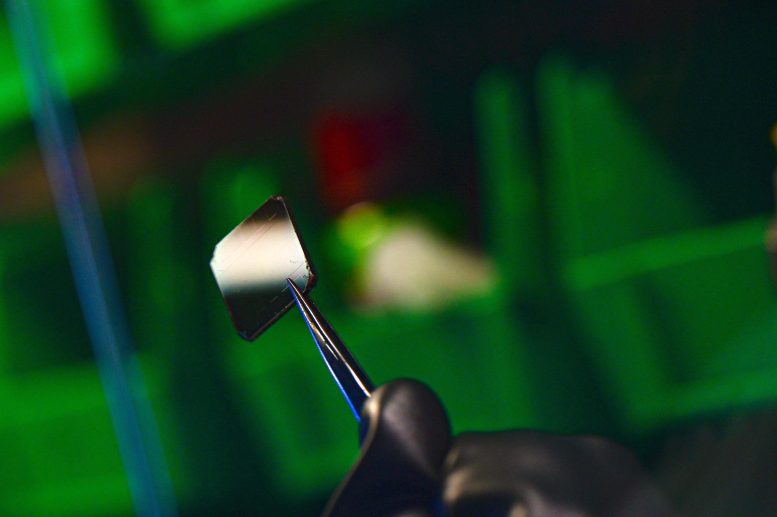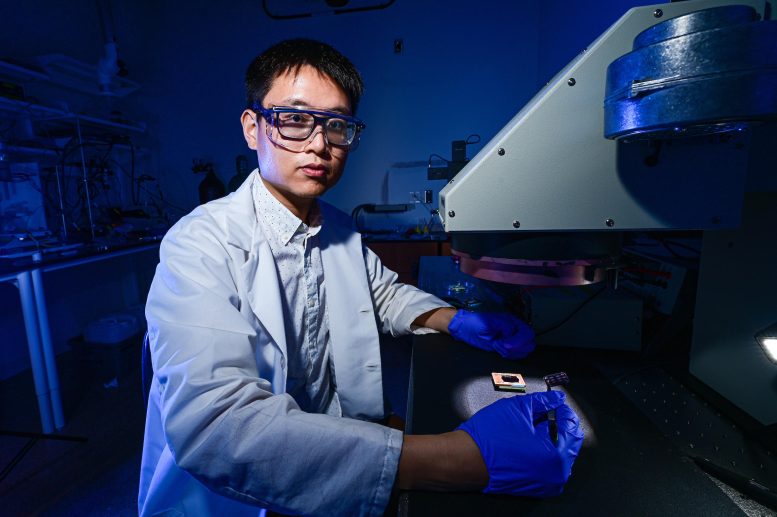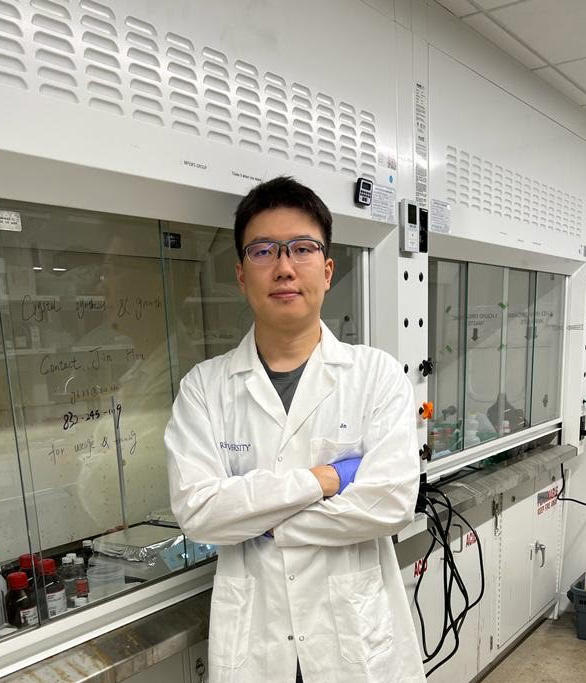
A process developed by Rice engineers and collaborators yields 2D halide perovskite crystal layers of ideal thickness and purity through dynamic control of the crystallization process ⎯ a key step toward ensuring device stability for optoelectronics and photovoltaics. Credit: Photo by Jeff Fitlow/Rice University
A study led by Rice University successfully solves the 2D halide perovskite synthesis bottleneck by controlling dynamic crystallization.
Recent advancements in solar cell efficiency have been significantly influenced by the use of light-harvesting materials such as halide perovskites. However, consistently producing these materials at a large scale remains a complex task.
A process developed by Rice University chemical and biomolecular engineer Aditya Mohite and collaborators at 
Wenbin Li is a Rice University graduate student and co-author on a study published in Nature Synthesis. Credit: Photo by Jeff Fitlow/Rice University
Known as kinetically controlled space confinement, the process could help improve the stability and reduce the cost of halide perovskite-based emerging technologies like optoelectronics and photovoltaics.
Overcoming Synthesis Bottlenecks
“Producing 2D perovskite crystals with layer thicknesses ⎯ or quantum well thickness, also known as ‘n value’⎯ greater than two is a major bottleneck,” said Jin Hou, a Ph.D. student in Rice’s George R. Brown School of Engineering who is a lead author on a study about the process published in Nature Synthesis. “An n value higher than four means materials have a narrower band gap and higher electrical conductivity ⎯ a crucial factor for application in electronic devices.”
As they form into crystals, atoms or molecules arrange themselves into highly organized, regular lattices. Ice, for instance, has 18 possible atomic arrangements, or phases. Like the hydrogen and oxygen atoms in ice, the particles that makeup halide perovskites can also form multiple lattice arrangements. Because material properties are phase-dependent, scientists aim to synthesize 2D halide perovskite layers that exhibit only a single phase throughout. The problem, however, is that traditional synthesis methods for higher n-value 2D perovskites generate uneven crystal growth, which impacts the material’s performance reliability.

Aditya Mohite is an associate professor of chemical and biomolecular engineering and the faculty director of the Rice Engineering Initiative for Energy Transition and Sustainability, or REINVENTS. Credit: Photo courtesy of Aditya Mohite/Rice University
“In traditional methods of 2D perovskite synthesis, you get crystals with mixed phases due to the lack of control over crystallization kinetics, which is basically the dynamic interplay between temperature and time,” Hou said. “We designed a way to slow down the crystallization and tune each kinetics parameter gradually to hit the sweet spot for phase-pure synthesis.”
New Methodology for Phase-Pure Crystals
In addition to designing a synthesis method that can achieve a gradual n-value increase in 2D halide perovskites, the researchers also created a map ⎯ or phase diagram ⎯ of the process through characterization, optical spectroscopy, and 
Jin Hou is a Rice University graduate student and lead author on a study published in Nature Synthesis. Credit: Photo courtesy of Jin Hou